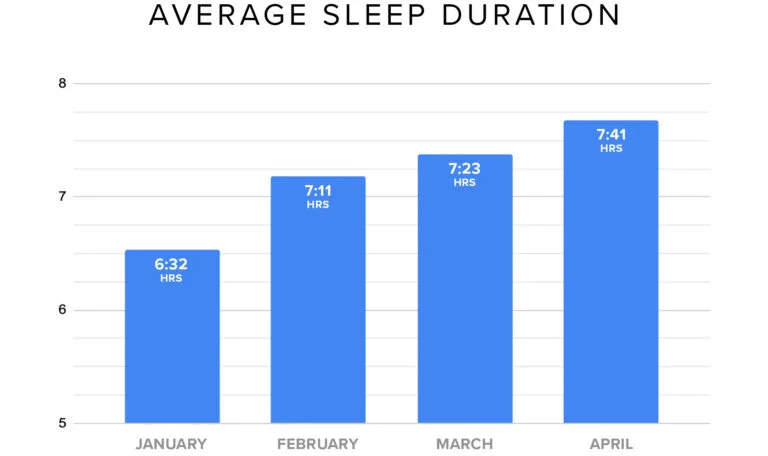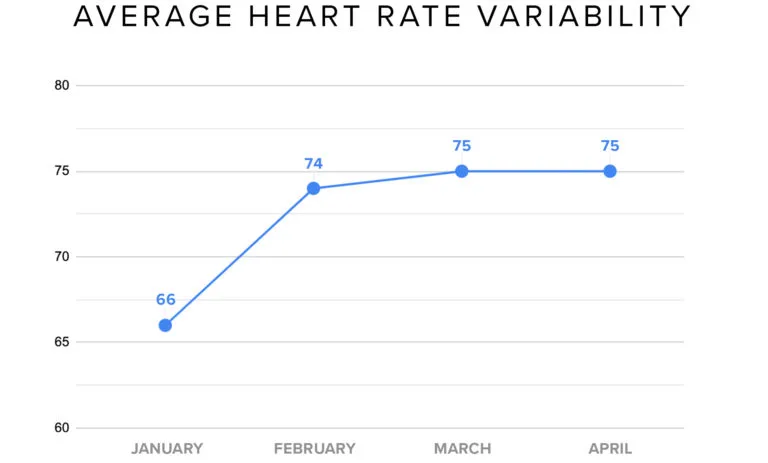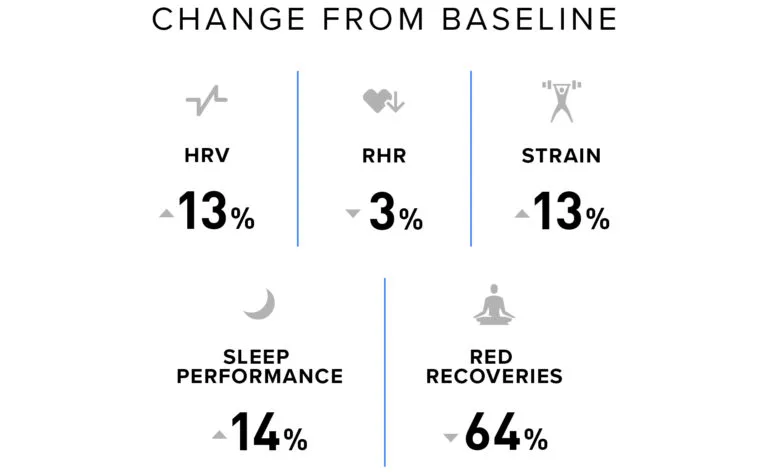Topics
- Article
- Organizations
- Research Studies
Case Study in Student Sleep and Behavior Change on WHOOP

We partnered with the St. Paul’s School to look at changes in behavior and physiological metrics when students are given 24/7 access to their biometric data.
St. Paul’s is a small college preparatory school in Concord, NH, with a long and storied tradition of academics and athletics. Established in 1856, the first ice hockey games in the US took place there in the 1870s, and it’s where the earliest squash court in the country was built as well, in 1884. St. Paul’s is also the high school WHOOP Founder and CEO Will Ahmed attended.
About the Case Study
As a boarding school under COVID restrictions, St. Paul’s offered a unique opportunity to evaluate students in a fairly controlled environment. While the school’s athletic programs remained operational, students were required to stay on campus (other than when they went home on break) and were not allowed to enter dormitories other than their own. We provided WHOOP Straps to all St. Paul’s students, faculty and staff. Using them was optional, and there were no asks made of the students to modify their behaviors in any way--they were simply given access to WHOOP and the data and analytics it provides (individuals’ data was completely private, unless they opted to share it via WHOOP teams). The numbers below represent the aggregate data from 375 students who chose to wear WHOOP on a regular basis.
Better Sleep
Shortly after putting on their Straps and first starting to monitor their sleep, the St. Paul’s students began sleeping much better. From January through April, they averaged more sleep per night each month than the month before--6:32 in January, 7:11 in February, 7:23 in March and 7:41 in April.

The students' average nightly sleep each month after Beginning to wear WHOOP.
“Using WHOOP has definitely made me more conscious of how much sleep I am getting, and the quality of my sleep,” one student said. WHOOP tracks not only the duration of your sleep, but how much time you spend in each sleep stage too. In addition to improving their total sleep, the St. Paul’s students also increased their time spent in REM and deep sleep, the restorative stages of sleep. Their average REM per night went from 1:41 in January to 1:51 in April, and their average deep sleep rose from 1:12 to 1:32.
Improvements in HRV and Resting Heart Rate
Heart rate variability (HRV) was another metric that increased over time after the St. Paul’s students were introduced to WHOOP. Collectively their average HRV was 66 milliseconds in January, 74 ms in February, and 75 in March and April.

The students' average Daily HRV each month after beginning to wear WHOOP.
They showed improvement in their average resting heart rate (RHR) as well, which dropped from 58 beats per minute in January and February to 56 bpm in March and April.
Behavior Changes and Healthier Lifestyle
After establishing baseline metrics over a three-week period in January, we also observed an increase in the students’ average daily strain (how we quantify activity levels through cardiovascular exertion), and a decrease in the frequency of red recoveries (a 0-100% metric in green, yellow or red for how prepared your body is to perform each day). Through the end of April, strain was up 13%, while red recoveries were down 64%.

The students' improvements in various metrics tracked by WHOOP.
“WHOOP has been quite a nice experience,” added another student. “I joined a team with 9 of my friends, and being able to see each other's strain, sleep, and recovery has really been fun. We get on each other for not sleeping enough, and compete to get the most strain every day. In my daily WHOOP journal I log hydration, so that keeps me thinking about my water intake and making sure I am hydrated.” And, it’s not just the St. Paul’s students who are benefiting from WHOOP--faculty and staff are seeing a positive impact as well. “The fact that WHOOP gives me so much personalized information about my health, exercise performance and sleep has been a life-changing experience for me,” said Timothy Caryl-Klika, St. Paul’s Director of Enrollment Management and Financial Aid. “I have used the data feedback to establish new habits, make better decisions on both a global and granular level, and overall just be a healthier person. I wish I had it years ago when I was young, and any person or athlete that is serious about understanding their health and performance should think long and hard about tapping into the stream of data that WHOOP provides.” Learn more about how WHOOP works with universities and teams. The products and services of WHOOP are not medical devices and should not be used as a substitute for professional medical advice, diagnosis or treatment. All content available through the products and services of WHOOP is for general informational purposes only.